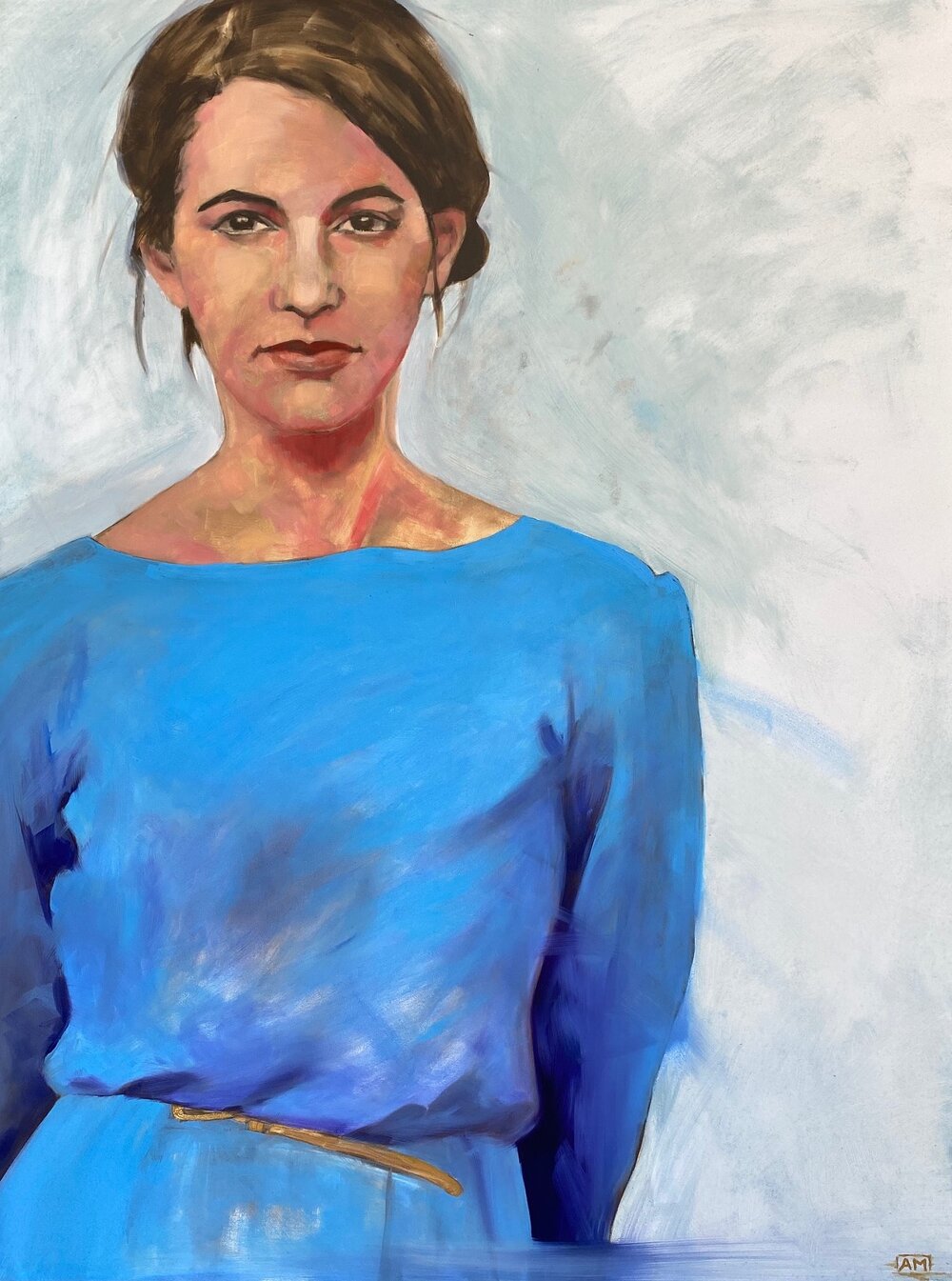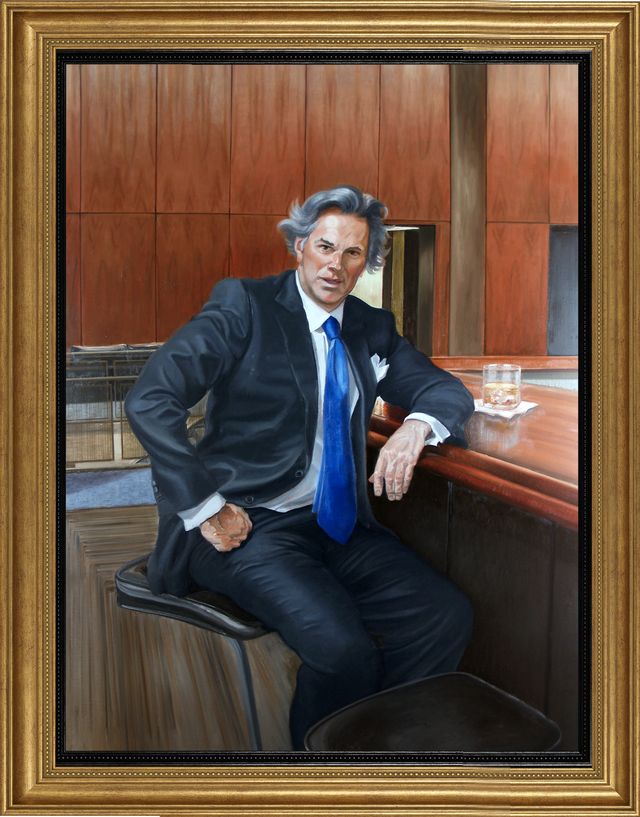The Development of Figurative Oil Paint: Comprehending Its Historic Value and Modern Interpretations
The development of metaphorical oil paint serves as an engaging lens with which to take a look at the interaction between artistic expression and historic context. Contemporary musicians, drawing from this rich heritage, are now reinterpreting the human figure in means that challenge typical narratives.
Beginnings of Metaphorical Oil Painting
The origins of metaphorical oil paint can be mapped back to the early Renaissance in Europe, specifically in the 15th century. The growth of oil paint allowed for better depth of color and information, enhancing the realism and vibrancy of their work.

In this transformative age, figures were often depicted within contextually rich environments, showcasing not just their physical characteristics however likewise their mental states. Pioneers such as Jan van Eyck and Titian harnessed the tool's adaptability, utilizing layering techniques to achieve luminance and appearance. This advancement assisted in the portrayal of intricate textiles and the subtleties of skin tones, adding to the growth of portraiture and narrative scenes.
In Addition, the Renaissance emphasis on humanism promoted a recognition for individuality, which subsequently affected artists to develop more dynamic and relatable numbers - figurative oil painting. Therefore, figurative oil painting emerged as an effective car for narration and emotional involvement, laying the groundwork for future imaginative motions and designs
Secret Historical Activities
Considerable historic movements have actually shaped the development of figurative oil painting, each adding distinct ideologies and methods that expanded the tool's opportunities. The Renaissance marked a turning point, highlighting realistic look and the human form, with musicians like Leonardo da Vinci and Michelangelo pressing the boundaries of anatomical accuracy and viewpoint. Following this, the Baroque era brought dramatic contrasts of light and darkness, exemplified by Caravaggio, who instilled spiritual themes with extreme emotionality.
The 19th century introduced Romanticism and Realism, where musicians such as Delacroix and Courbet tested classical suitables, concentrating on individual expression and daily life. The arrival of Impressionism further transformed the tool by stressing the effects of light and color, causing a separation from traditional representation.
In the early 20th century, motions like Expressionism and Cubism redefined metaphorical paint via abstraction and the exploration of psychological deepness. Each of these movements not only reflected the societal modifications of their times however likewise prepared for modern analyses. The interplay in between these historic activities has actually developed an abundant tapestry of philosophies and designs, affecting modern-day artists in their search of capturing the human experience on canvas.
Methods and Materials Development

Throughout the Baroque period, methods such as chiaroscuro and sfumato emerged, improving the emotional resonance of metaphorical make-ups. Artists started to explore lusters and impasto, adjusting texture and luminance. By the 19th century, technologies like making use of pre-mixed paints in tubes changed ease of access, enabling musicians to repaint en plein air and capture the short lived results of light.
The 20th century observed the intro of synthetic pigments and mediums, which increased the combination and altered the uniformity of oil paints. The expedition of brand-new application techniques, such as palette knives and brushes of differing stiffness, further diversified artistic expression. Collectively, these improvements show the evolving relationship between products, strategies, and the artistic vision fundamental in metaphorical oil paint.

Contemporary Analyses
Contemporary analyses of metaphorical oil paint show a dynamic discussion between tradition and innovation, where musicians challenge established norms and discover varied themes. This development shows up in various methods, as modern artists mix timeless techniques with modern-day concepts, often resolving social, political, and personal stories.
Lots of practitioners attract motivation from historical works, yet they instill their check my blog pieces with modern viewpoints, using the human form as a car for commentary on identification, society, and gender. Artists increasingly trying out abstraction, distortion, and mixed media, which enables a wider analysis of the number and its context.
Additionally, using vivid shade palettes and non-traditional structures usually serves to interrupt conventional watching experiences, provoking critical involvement from audiences. This shift in focus expands past aesthetic appeals; it reflects a growing recognition of the intricacies of human experience in an interconnected world.
As metaphorical oil painting proceeds to evolve, it stays an important medium for discovering the nuances of contemporary life, personifying both a respect for heritage and a dedication to modern thought. The result is a rich tapestry of expression that resonates with the intricacies of the modern human problem.
Effect On Modern Art
The effect of metaphorical oil paint on contemporary art is extensive, as it has continually motivated a myriad of artistic movements and practices throughout the 20th and 21st centuries. From Expressionism to Surrealism and beyond, the exploration of the human figure has actually continued to be a main style, allowing artists to convey complicated feelings and stories. This focus on metaphorical representation has led to a re-examination of typical methods, leading to innovative techniques that blend realism with abstraction.
In addition, modern musicians have actually welcomed metaphorical oil painting as a way to resolve social and political concerns, making use of the medium to test understandings of identification, gender, and culture. The renewal of rate of interest in figurative work in recent years reflects a wishing for link in a significantly electronic world, where human experience and feeling are critical.
Additionally, the dialogue between metaphorical oil painting and modern-day art appears in the jobs of artists such as Kehinde Wiley and Jenny Saville, who draw great post to read on historic references while instilling their items with contemporary relevance. Ultimately, metaphorical oil paint remains to shape and redefine modern imaginative expression, underscoring its enduring significance in the art world.
Verdict
The advancement of metaphorical oil painting highlights its historic value and flexibility across various imaginative activities. Eventually, figurative oil paint remains a crucial tool for checking out the human experience, resonating exceptionally in today's digital landscape.
The advancement of figurative oil painting offers as a compelling lens through which to examine the interaction in between artistic expression and historical context.Substantial historical motions have actually shaped the advancement of metaphorical oil paint, each contributing special ideologies and techniques that increased the medium's possibilities.As historic movements shaped the trajectory of metaphorical oil painting, the strategies and products used by artists have actually likewise undergone substantial improvements. figurative oil painting.The effect of figurative oil paint on modern art is extensive, as it has actually consistently inspired a myriad of artistic activities and methods throughout the click here to find out more 20th and 21st centuries.The advancement of figurative oil painting highlights its historic significance and adaptability throughout various creative activities